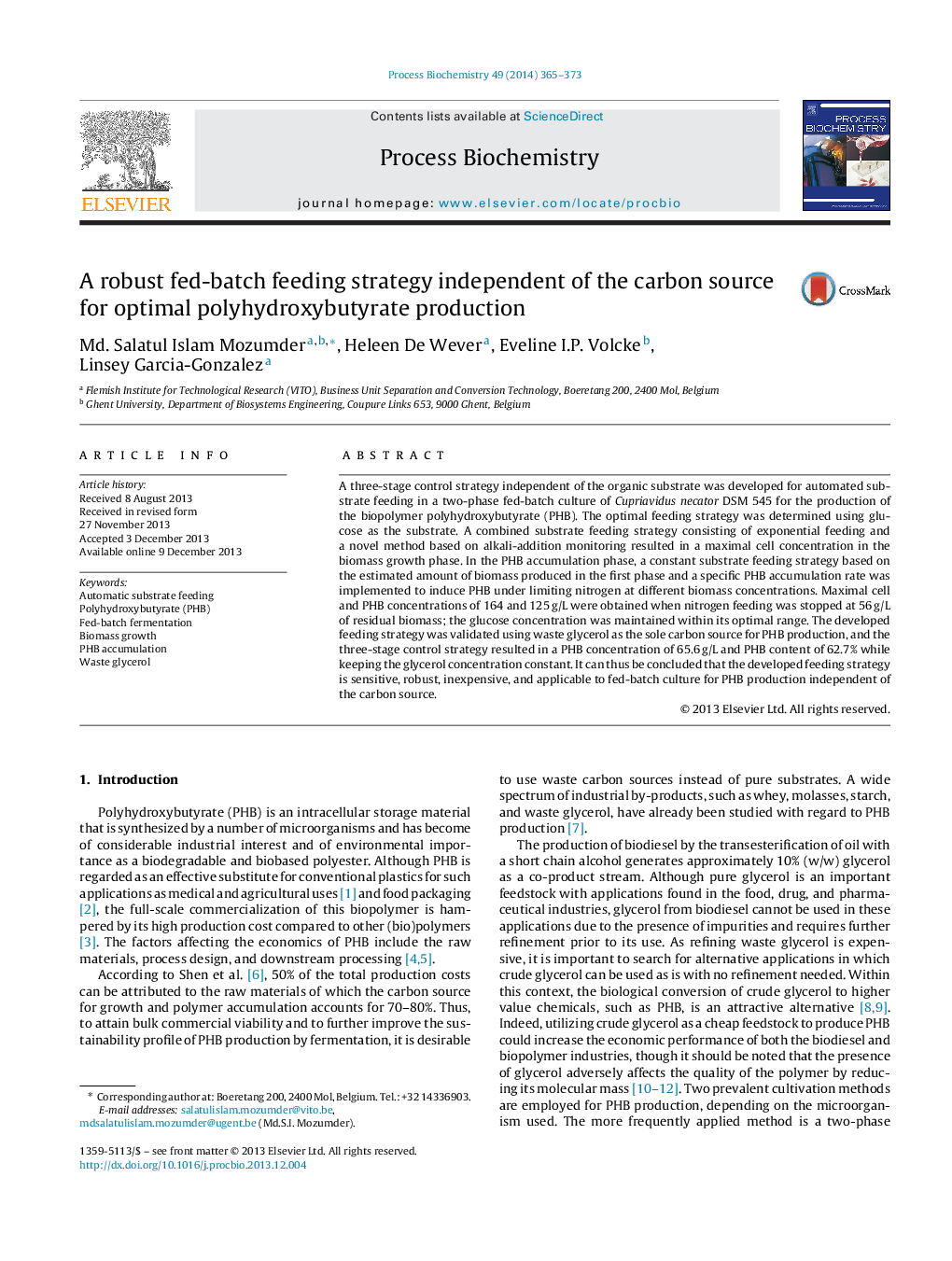| Article ID | Journal | Published Year | Pages | File Type |
|---|---|---|---|---|
| 10235446 | Process Biochemistry | 2014 | 9 Pages |
Abstract
A three-stage control strategy independent of the organic substrate was developed for automated substrate feeding in a two-phase fed-batch culture of Cupriavidus necator DSM 545 for the production of the biopolymer polyhydroxybutyrate (PHB). The optimal feeding strategy was determined using glucose as the substrate. A combined substrate feeding strategy consisting of exponential feeding and a novel method based on alkali-addition monitoring resulted in a maximal cell concentration in the biomass growth phase. In the PHB accumulation phase, a constant substrate feeding strategy based on the estimated amount of biomass produced in the first phase and a specific PHB accumulation rate was implemented to induce PHB under limiting nitrogen at different biomass concentrations. Maximal cell and PHB concentrations of 164 and 125Â g/L were obtained when nitrogen feeding was stopped at 56Â g/L of residual biomass; the glucose concentration was maintained within its optimal range. The developed feeding strategy was validated using waste glycerol as the sole carbon source for PHB production, and the three-stage control strategy resulted in a PHB concentration of 65.6Â g/L and PHB content of 62.7% while keeping the glycerol concentration constant. It can thus be concluded that the developed feeding strategy is sensitive, robust, inexpensive, and applicable to fed-batch culture for PHB production independent of the carbon source.
Keywords
Related Topics
Physical Sciences and Engineering
Chemical Engineering
Bioengineering
Authors
Md. Salatul Islam Mozumder, Heleen De Wever, Eveline I.P. Volcke, Linsey Garcia-Gonzalez,
